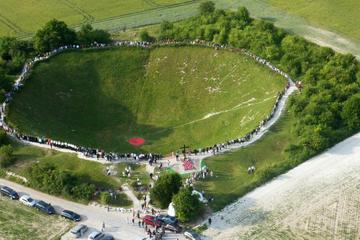Lochnagar Crater
TIME : 2016/2/22 10:55:50

Lochnagar Crater
Often nicknamed the Glory Crater, the 80-meter wide and 30-meter deep Lochnagar Crater was created by a mine detonation executed by the 179th Tunneling Company Royal Engineers on the first day of the now-infamous Battle of the Somme at precisely 7:28 a.m. The mine itself consisted of 27 tons of explosives and was planted by Welsh miners in a secret tunnel between the English/French and German fronts in La Boisselle. The men had to work in a discreet yet highly effective manner, using bayonets with spliced handles for silence and working barefoot on a floor covered with sandbags. Spoil was passed hand-by-hand in sandbags and stored along the side of the tunnel. It would eventually be used to tamp the charge during the detonation. The men excavated the passageway at a rate of about 46 centimeters per day, eventually reaching 1,017 feet (310 meters) long, 2.5 feet (0.75 meters) wide and 4.5 feet (1.4 meters) high—unbeknownst to the German troops.
The crater has been preserved as a memorial ever since the end of the war, with a special service held at 7:28 a.m. on the first of every July, kick-starting the yearly Battle of the Somme commemorations. Visitors should know that Lochnagar Crater is the only remaining war-era crater that is open to the public and that the crater was named after Lochnagar Street, the trench from which the gallery was originally driven.
Practical Info
Lochnagar Crater is located 158 kilometers north of Paris just past Amiens. It can be reached via route A1 and D938 in less than two hours. There are no entrance fees.
